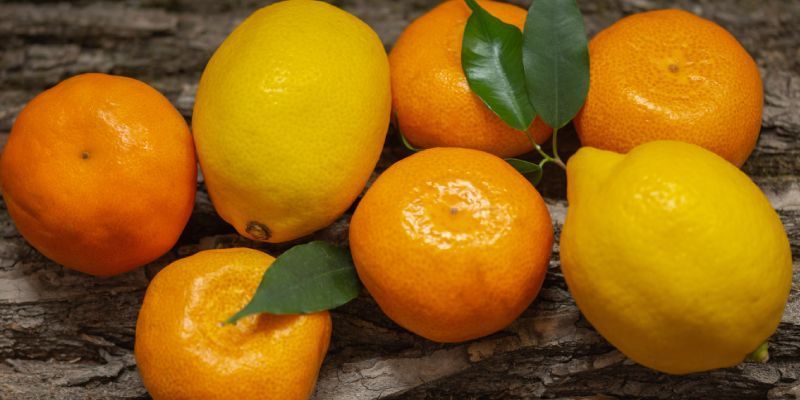Citrus fruits: flavor and application in the food industry

Citrus fruits are popular in food production for their flavor and properties. Explore here their different uses.
These fruits are among the most widely cultivated around the world. Their plants are native to the tropical or subtropical regions of both Asia and Oceania. They are constantly growing so they live for about 50 years; in turn, it is possible to grow them in farms of all sizes. Currently, the countries with the highest citrus fruits production are China, Brazil, and the United States (FAO, s.f.).
Oranges, tangerines, lemons, and grapefruit are the most widely produced citrus fruits and are traded globally. They are also a great source of vitamins, minerals, and fiber (FAO, s.f.). In the food industry, they are found not only as fresh fruit but also as a component of processed products.
Interest in citrus flavors
Citrus flavors are popular for their combination of sweet and sour. For example, they are preferred by consumers in the field of soft drinks. Additionally, they can be easily combined with many other flavors. The citrus profile works in harmony with tropical fruits, green fruits and yellow fruits, to name a few (Persistence Market Research, 2023).
In fact, lemon and orange are two flavors in vogue (FONA International, 2021):
· Lemon brings freshness and balance to foods. Especially, it is used in juice drinks, flavored water and confectionery.
· Orange is sweet, juicy and very versatile. Today, it is a favorite ingredient in beverages, confectionery and bakery products.
On the other hand, this strong interest in citrus flavors is influenced by a preference for natural ingredients. Increasingly concerned about their health and well-being, consumers favor products with non-artificial components (Persistence Market Research, 2023).
Citrus fruit applications in the food industry
FAO estimates that one-third globally of this type of fruit is destined for processed foods, either in the form of citric acid or oil, pulp, juice or concentrate.
For example, concentrate is a flavor ingredient for producing juices, soft drinks, syrups, ice cream and confectionery. It is also used as a natural sweetener (Aniket and Roshan, 2022). Another attribute that makes it a widely used input for the production of processed foods is its versatility. It can be combined with any flavor to create a new flavor profile (Persistence Market Research, 2023).
Lemon juice concentrate is used in the production of various beverages, jams, snacks, confectionery and bakery products (Allied Market Research, 2023). This performance has to do with consumers' interest in products with natural and organic ingredients (Persistence Market Research, 2023
Thus, citrus fruits in their various forms enjoy a wide range of applications in the food industry.
Bibliographic references
- Allied Market Research. (2023). Lemon Juice Concentrated Market by Product Type (ORGANIC, CONVENTIONAL), by FORM (POWDERED, LIQUID), by END USER (FOOD SERVICE INDUSTRY, FOOD BEVERAGES INDUSTRY, NUTRACEUTICAL INDUSTRY, OTHERS) and by DISTRIBUTION CHANNEL (DIRECT/B2B, INDIRECT/B2C): Global Opportunity Analysis and Industry Forecast, 2023-2032.
- Aniket, K. y Roshan, D. (2022). Citrus Concentrate Market by Source (Oranges, Lemons and Limes, Grapefruits, Tangerines, Others), by Nature (Conventional, Organic), by End Use (Food and Beverage Industry, Pharmaceuticals, Nutraceuticals, Others), by Form (Dry, Liquid): Global Opportunity Analysis and Industry Forecast, 2022-2031. Allied Market Research.
- FONA International. (2021). TRENDING FRUIT FLAVORS 2021 & BEYOND.
- Food and Agriculture Organization of the United Nations FAO. (s.f.). Citrus.
- Persistence Market Research. (2023). Juice concentrate market.
- Persistence Market Research. (2023). Citrus concentrate market.
- Persistence Market Research. (2023). Citrus flavors market.













